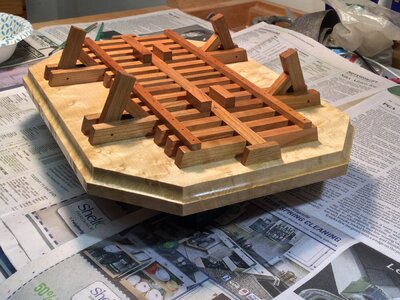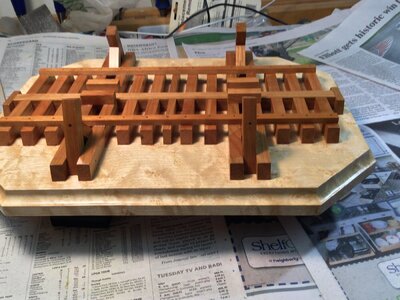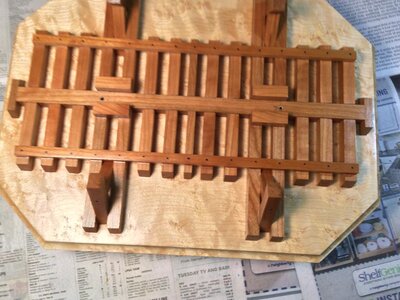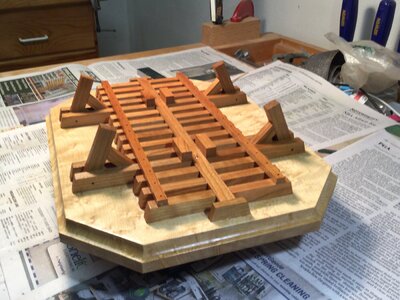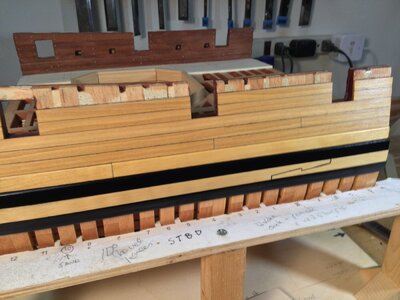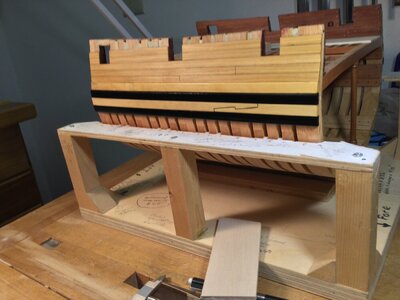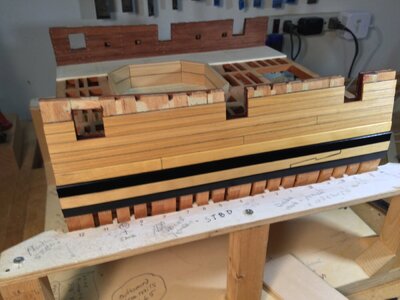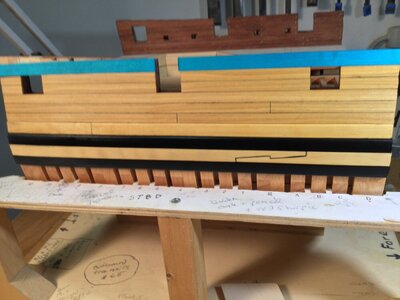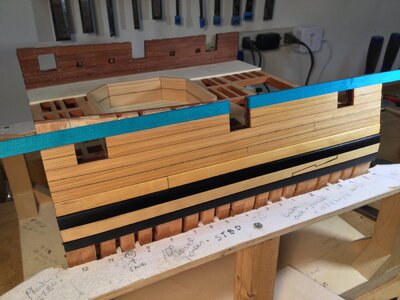Great clean work,, of course.
-

Win a Free Custom Engraved Brass Coin!!!
As a way to introduce our brass coins to the community, we will raffle off a free coin during the month of August. Follow link ABOVE for instructions for entering.
You are using an out of date browser. It may not display this or other websites correctly.
You should upgrade or use an alternative browser.
You should upgrade or use an alternative browser.
Bomb Vessel Granado 1742 - Cross Section - 1:32 Scale - Scratch Build by DocBlake [COMPLETED BUILD]
Very well pre-planned base and materials selection that the Poly brings forth. This will make an excellent base for your build. Rich (PT-2)Thanks, Tony!
I put a couple of coats of poly on the display board. It really brings out the color of the cherry and the figure of the maple!
View attachment 264857View attachment 264858View attachment 264859View attachment 264860
I've got a dilemma. The outboard planking on Granado will be boxwood, and the 3 strakes of the wales will be ebony. The question is, how do I handle the "black strake", directly above the wale. The name suggests it should be ebony also, but the AOTS cover illustration clearly shows it to be ochre colored. Modelers have gone both ways. What do you all think? Ebony or boxwood for the "black strake"?

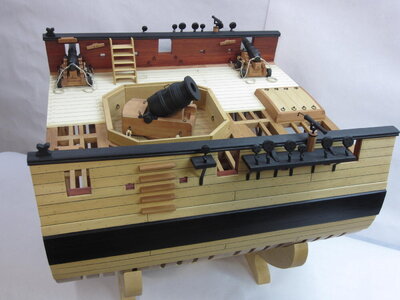
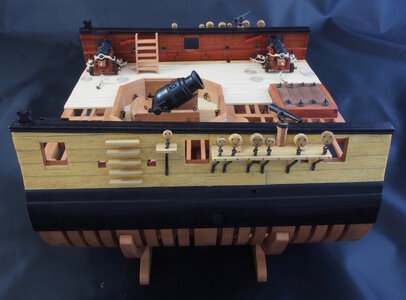



Black Hornbeam
Dave, I like the Boxwood, I think it really makes the Wales stand out and it adds more dimension to the area with its top line standing a bit proud of the planking. Whichever you do will look good - I just prefer the subtle change from planking, to black strake, to wales…. Your skill is really showing up on this build, your display launching ways look great and the overall effect will be striking! Really nice work!
- Joined
- Dec 1, 2016
- Messages
- 6,338
- Points
- 728

i would vote for the Boxwood
Reason
making it black just makes it part of the wale making it boxwood makes it stand out on its own not being black or the same thickness of the boxwood planking but a seperate piece
Reason
making it black just makes it part of the wale making it boxwood makes it stand out on its own not being black or the same thickness of the boxwood planking but a seperate piece
Yeah, Dave, you (and the other boxwood fans) are probably right. Also, boxwood makes the scupper discharge ports more obvious and makes using ebony for the channels aesthetically more balanced.i would vote for the Boxwood
Reason
making it black just makes it part of the wale making it boxwood makes it stand out on its own not being black or the same thickness of the boxwood planking but a seperate piece
I like the boxwood for the black strake, Heinrich! I'm planning on 2 discharge ports for the scuppers and they will stand out a bit on boxood vs. ebony or blacck hornbeam. Also, the channels and deadeyes will be black. The boxwood works better with that combination.
- Joined
- Jan 9, 2020
- Messages
- 10,534
- Points
- 938

Isn't that scarf joint just perfect!I could stare at that hook scarf joint for hours. Great joinery!
Very good work on the planking
Hello Dave, I'm loving your planking work. 
Hallo Dave alias @DocBlakeThis is my log for my scratch build of a cross section of the bomb vessel HMS Granado. The plans were drawn by Jeff Staudt and were based on Peter Goodwin's AOTS book, which I plan to use as a reference. The section is from the center of the ship and includes 3 gun ports on each side, and a pit for a 13" mortar, one of two mortars on board. The rectangle in the image shows the location. I purchased the plans in 1/24 scale, but that is clearly too large for the space the Admiral has alloted for the model so I'll build her in 1:32 scale. Even at that reduced scale, the model is 7-1/2" high, 10" wide and 10-3/4" long!
Granado was one of a dozen bomb vessels, or mortar-armed ships built by the Royal Navy between 1740 and 1742. She was launched at Ipswich on June 22, 1742. The vessel was 91'-1" long with a beam of 26'-2" and was 269 tons burthen. This is just about the size of HMY Caroline! The Granado was a small ship! Despite this, her framing was very robust - to handle the weight and recoil force of the two mortars on board.
The framing is one double frame, followed by three single frames with this sequence repeating. Jeff's plans were somewhat stylized for ease of construction. Each frame uses typical chock and scarf construction, rather than the sistered frame approach used by Hahn and others. One interesting feature in construction is the use of reinforcing timbers fitted to the floors and lower futtocks of the frames below the mortars. These were called floor and futtock riders and were designed to beef up the frames so thay could safely absorb the recoil shock from the mortars.
The double frames were 2 feet wide and 20” thick near the keel. The single frames were 1 foot wide and 20" thick at the keel.
As is my preference, I will attempt to build without the use of paint or stains. The hog, keel and upper false keel will be beech, as will all the frames. The lower false keel will be ebony. We'll begin by constructing the framing jigView attachment 184482View attachment 184483
we wish you all the BEST and a HAPPY BIRTHDAY
Enjoy your special day




